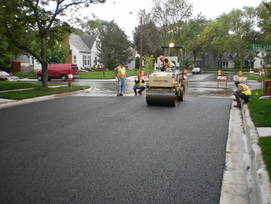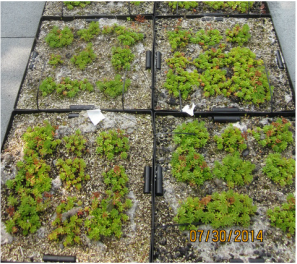Research and Special Studies
|
Biochar and Iron-Enhanced Sand Filters
The Shingle Creek and West Mississippi Watershed Management Commissions obtained a federal grant to fund a project to field-trial three applications of a new promising yet simple technology to help reduce bacteria such as E. coli in stormwater. In urban areas bacteria sources are diffuse – pet and wildlife waste, sanitary overflows and leakages - and options for reducing loads are limited. Biochar – a specially engineered type of ground charcoal –added to iron-enhanced sand filters has been effective in lab experiments at removing bacteria in synthetic stormwater. The three field trials tested the effectiveness of these filters at treating real-world stormwater runoff by adding the substance to stormwater pond iron-enhanced sand filter benches; to filters placed in storm sewer catch basins; and to a filter bed to treat flow diverted from Shingle Creek. Construction was completed in 2016, and the applications were effectiveness-monitored in 2016-2017.
Learn More: Biochar- and Iron-Enhanced Sand Filter Project Description |

This sand filter bench on a Crystal stormwater pond is enhanced with iron filings to better remove dissolved phosphorus. When the pond level rises during a storm, water percolates through the filter and into a drain tile. The white riser pipes are used to grab monitoring samples from the drain tile.
|
Paired Intersection Study
Between 2009 and 2013 the Shingle Creek WMO and City of Robbinsdale completed a research project to investigate whether porous asphalt can be used as a physical substitute for road salt as an ice prevention method. Shingle Creek is an Impaired Water for excess chloride, and a TMDL showed a 71% reduction in chloride is needed to meet water quality standards. Two low-volume residential intersections in Robbinsdale were selected as test sites. One leg of each was reconstructed using porous asphalt pavement. An adjacent intersection at each served as control. During the two year monitoring period, the control intersections were plowed and salted as usual. The test sections were plowed, but no salt or sand was applied. Images taken by closed circuit cameras overlooking the sites were used to estimate bare pavement. Results suggest that unsalted porous asphalt pavement can have net bare pavement comparable to a salted traditional pavement section.
Learn More: Paired Intersection Study Final Report |
Green Roof Modules
Green roofs are increasing in popularity, but they can be expensive and are difficult to retrofit when existing roofs have little additional load bearing capacity. The objective of this 2012-2015 Shingle Creek and West Mississippi WMO research study was to develop and test several versions of a do-it-yourself light-weight, portable, modular system of soil media and plants that could be constructed and installed by non-professionals on existing rooftops to catch and retain precipitation that would otherwise be converted to urban runoff. The modules would be suitable for installation on existing roofs without the need for supplemental structural reinforcement, membrane installation to combat leakage, or intensive maintenance such as supplemental irrigation.
Learn More: Modular Green Roof Final Report Modular Green Roof Do-It-Yourself Brochure |
Subwatershed Assessments
Subwatershed assessments are intensive studies of small areas of land to identify the best locations for small Best Management Practices (BMPs) such as rain gardens, tree trenches, and biofiltration basins. They are usually completed in areas that are already developed and have little or no stormwater treatment, and where it is not practical to construct a large BMP such as a stormwater pond.
Learn More: Eagle Lake Subwatershed Assessment & Eagle and Pike Lake In-Lake Assessments Gaulke Pond Subwatershed Assessment & Concept Plans Champlin Redevelopment Area Robbinsdale Crystal Lake Area Brooklyn Center Evergreen Park Area Crystal Shopping Center Area Pike Lake Subwatershed Assessment - Plymouth Pike Lake Subwatershed Assessment - Maple Grove |



